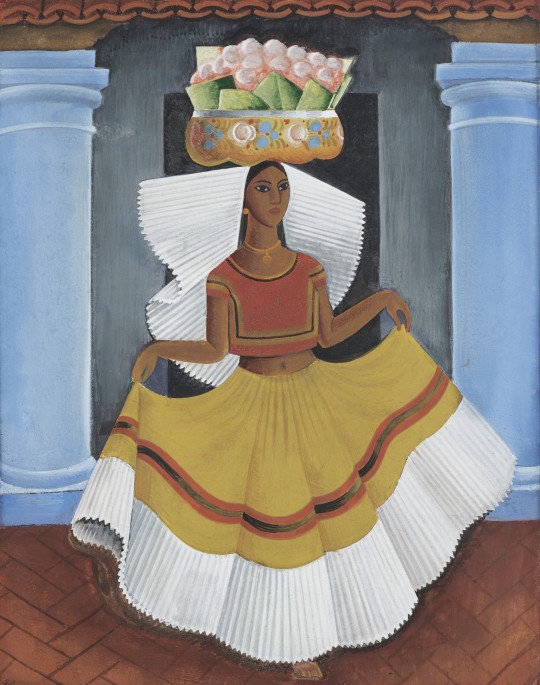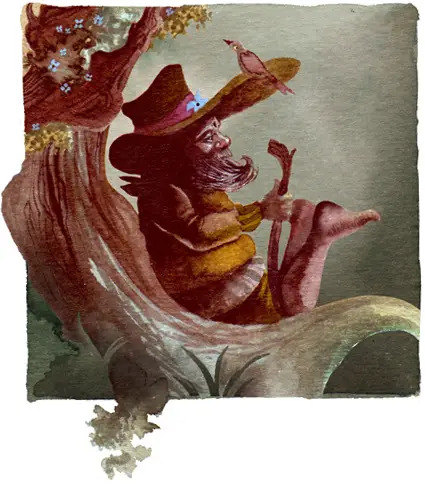#Mestizo
Text

Tehuana with Basket, Miguel Covarrubias, circa 1940
Gouache on cardboard
11 x 8 ¾ in. (28 x 22.2 cm)
#art#painting#miguel covarrubias#1940s#20th century#20th century art#gouache#portrait#mexican#mestizo#indigenous#indigenous art#indigenous artists#artists of color#modern art
284 notes
·
View notes
Text
MI GENTE!!!!!!!!!!!💕💕💕💕💕💕💕💕💕💕💕💕💕💕💕💕💕💕💕💕💕💕💕💕💕💕💕💕💕💕💕💕💕💕💕💕
#UGH this made me smile so hard i damn near squeed like a girlfaggot#dominican tag#dominican republic#dr#afro-caribbean#afrolatina#afrolatino#mestiza#mestizo#blackness#black femme#black culture#latino culture#summercore#💌#summerposting
18 notes
·
View notes
Text
Me: You're mestizo
Mom: Correct
Me: And you've expressed sadness about how your indigenous father hid all his roots out if fear of being socially shunned and feel a disconnect
Mom: Correct
Me: So you understand that erasing culture is a form of genocide
Mom: Yes
Me: So do you agree that defending your culture from erasure and bastardization is a worthy goal and that we should do that?
Mom: No, I think we should submit to our conquerors and just lay down to die as they massacre us cause if we're submissive enough, they won't kill us...
Me: *screams in frustration*
15 notes
·
View notes
Photo

Patricia Velásquez
Gender: Female
Sexuality: Lesbian
DOB: 31 January 1971
Ethnicity: Mestizo, Indiginous Venezuelan (Wayuu)
Nationality: Venezuelan
Occupation: Model, actress
#Patricia Velásquez#Patricia Velasquez#lesbianism#sapphic#lgbtq#female#lesbian#1971#Mestizo#Venezuelan#indigenous#native#poc#biracial#model#actor#Remember Anck-su-namun in The Mummy? She’s gay.
103 notes
·
View notes
Text
Multiracial Flag

It can represent biracial, triracial, and among other people of mixed races. Multiraciality represents having multiple racial identities in one's ancestry.
There are other words that describes this.
#multiracial flag#interracial#interacial#biracial#triracial flags#quadracial#quadriracial#mixed race#mulatto#mulatte#mulatta#racial identity#raceness#race-ness#races#vexillology#vexillography#mestizo#mestiza#mestize#mestizx#mulattx#polyracial#poliracial#pluriracial#multi-raciality#bi-racial
12 notes
·
View notes
Text
She [the mestiza] puts history through a sieve, winnows out the lies, looks at the forces that we as a race, as women, have been a part of. Luego bota lo que no vale, los desmientos, los desencuentros, el embrutecimiento. Aguarda el juicio, hondo y enraizado, de la gente antigua. This step is a conscious rupture with all oppressive traditions of all cultures and religions. She communicates that rupture, documents the struggle. She reinterprets history, and using new symbols, she shapes new myths. She adopts new perspectives toward the darkskinned, women and queers. She strengthens her tolerance (and intolerance) for ambiguity. She is willing to share, to make herself vulnerable to foreign ways of seeing and thinking. She surrenders all notions of safety, of the familiar. Deconstruct, construct. She becomes a nahual, able to transform herself into a tree, a coyote, into another person. She learns to transform the small "I" into the total Self. Se hace moldeadora de su alma. Segun la concepción que tiene de sí misma, así será.
— Gloria Anzaldúa, "La conciencia de la mestiza: Towards a new consciousness."
Follow Diary of A Philosopher for more quotes!
#lit#literature#quote#quotes#gloria anzaldua#colonialism#native american#mestizo#mestiza#philosophy quote#philosophy quotes#philosophy#feminist#feminist philosophy#queer theory#intersectional feminism#dark academia#light academia#latine#latin#latin america#south america#central america
4 notes
·
View notes
Text
the family lineage is so complicated too like .okay so allegedly id be mexican (on moms side) but then sometimes she will tell people we are spanish but when i ask shes like actually our oldest known great grandparents were new mexican and pueblo and also part of the family on her dads side i think are actually from the san juan valley but then shes like oh i just found out we might actually go all the way back to basque country. but the family records book says mexican all the way down. and last time we talked she said im mostly mexican + pueblo. so who even knows. and then thats not even mentioning MY dads side who are german. or czech. its confusing. something wrong with me
2 notes
·
View notes
Text

Perro mestizo o "quiltro" esperando a su dueño en una fría mañana de otoño sobre una tapa de metal tibio.
Conchalí, Santiago de Chile, mayo 2023.
10 notes
·
View notes
Text
Discovering Mexico's hidden history: Jesús María Serna Moreno unveils the intricate tapestry of interethnic relations, challenging stereotypes of a “mestizo” nation. Acknowledging Afro-descendant and indigenous roots is crucial for a more inclusive and united Mexico.
2 notes
·
View notes
Text
Tata Duende
The Tata Duende or El Dueño del Monte is a supernatural creature appearing in cultural folklore stories, mostly evident in Mayan and Mestizo cultures. The Tata Duende is considered a powerful spirit that protects animals and the jungle. There are many stories that have been passed on from generation to generation, to warn against this mischievous spirit.

This creature has appeared on a postage stamp of Belize as part of a series on Belizean folklore. The name Tata Duende comes from the Yucatec Maya word "Tata" meaning Grandfather or old and the word "Duende" is Spanish for goblin. The Spanish term duende originated as a contraction of the phrase dueño de casa or duen de casa, "possessor of a house", and was originally conceptualized as a mischievous spirit inhabiting a house. In Yucatec Maya the Tata Duende is known as Nukuch Tat.
The Tata Duende is a famous folklore common to the Maya culture and the Mestizo culture. According to different stories, The Tata Duende " is well known for luring children into the jungle, therefore, the Tata Duende has been used to scare children into behaving. Farmers would blame the Tata Duende if weird things happened on the farm. For example: it was common to see a horse's mane braided and it is claimed that these braids would be difficult to loose, sometimes it had to be cut. The true origin of the 'Tata Duende' seems to be quite unclear since many countries may have similar descriptions but different names. However, the term 'Tata Duende' seems to be coined in the Belizean folklore. Between the Yucatec Maya of Belize the Tata duende is known as Nukuch Tat or Tata Balam, it is seen as a good Maya guardian spirit of the forest, animals and humans. The Yucatec Maya of Belize continue giving offerings to the Tata duende for protection and for their help .
People who claimed to have seen the 'Tata Duende' said he was about 3 feet tall and wore a wide brimmed hat. Sometimes he wore a red hat and animal skin for clothing. He is also described as having his feet pointing backwards and his thumbs missing. Parents would tell their children that if they ever came across this creature to hide their thumbs or the Duende would bite it off. Some stories of people who have encountered the 'Tata Duende' say that they could recognize him because of his distinct whistle. Others say that he smokes cigars and plays the guitar.
here are many stories warning people to be cautious at farms or jungles when walking alone. The Duende has a special interest in children where he would lure them deeper into the woods and the only way to escape him would be if you hide your thumbs and show only your four fingers. The Duende would think you are like him and would let you go. Other stories say that the Duende would appear mostly during the 'Lenten Season' especially on 'Good Friday.' He is also known for braiding horses' manes and little girls' hair. In addition, the 'Tata Duende' is known to often change into a small animal, or even someone you know. Between the Yucatec Maya, the Tata Duende(Nukuch Tat) protects children in the bush. Many Yucatec Maya asks permission from the Nukuch Tat before entering the Bush or before entering to hunt.
5 notes
·
View notes
Text
i want to know where i come from
The most awful feeling is knowing you have a heritage with the first people but no record. my family didn't register with the Cherokee nation because they were afraid of discrimination...I now fear that part of my heritage is lost to me forever because I have no paper trail.
7 notes
·
View notes
Text
4 notes
·
View notes
Text
Yo my mestise queers, I love you all 💙
3 notes
·
View notes
Photo

@mixedpinoychronicles: "I'm half #Filipino and half #White. I grew up in a household where my mom spoke #Tagalog to my oldest sister, who was born in the #Philippines, but I was never taught the language because I was "American". I remember being cared for at a very young age by my Lola (grandmother) who spoke Tagalog to me, but once we moved away the language was lost. I was raised in a very white neighborhood and attended a predominantly all white school. I knew I didn't look anything like my blond, blue-eyed father. However, on the rare occasions when I met other Filipino kids, I knew instantly that I was not Filipino enough either. I was introduced to my mom's Filipino friends as, "not Filipino", which was incredibly confusing and painful. I was referred to as "mutt", "half-breed" and "Heinz 57" by my dad and his family. It wasn't until my early 30's that I sought to regain my cultural identity through education, public service in the #API community and introducing my children to our food and history. I've learned that the forced assimilation of prior generations does not have to define me. To other biracial #Pinay or #Tisoy (colloquial for #Mestizo), I see you. Mabuhay!" 🇵🇭🏳️🇺🇸 #mixedgirlproblems #filipinoamericanhistorymonth https://www.instagram.com/p/CkJTQXCOYXX/?igshid=NGJjMDIxMWI=
#filipino#white#tagalog#philippines#api#pinay#tisoy#mestizo#mixedgirlproblems#filipinoamericanhistorymonth
7 notes
·
View notes
Text
All Around Us by Xelena González; Illustrated by Adriana M. Garcia

Lush illustrations of full circles and arcs echo the life-affirming traditions of the Mestizo culture the grandfather is teaching the granddaughter. Adriana M. Garcia’s incorporation of circles big and small are evocative of the books message and allow the reader to begin their own search for “circles all around us” within the book and their own lives.
More info and activities from the author to accompany the book: https://allaroundus.info/
2 notes
·
View notes
Photo

¡Dedid hola al"DOGtor" FREUD! #aveceshagofotos #ishootfilm #kodakcolor200 #nikonf4 #traditionalphotography #mestizo #pastorcatalan #irishwolfhound #adoptadog #albergueanimalesserin (en Taller de Arte Mauro) https://www.instagram.com/p/CoVOpFQqRgl/?igshid=NGJjMDIxMWI=
#aveceshagofotos#ishootfilm#kodakcolor200#nikonf4#traditionalphotography#mestizo#pastorcatalan#irishwolfhound#adoptadog#albergueanimalesserin
3 notes
·
View notes